In my journey of learning how to cook, I have found it extremely important to know how to substitute ingredients I don’t have on hand for other ingredients. Instead of feeling paralyzed when you can’t find that one ingredient in the grocery store, or realizing you don’t have a certain ingredient in your kitchen, I’ll begin to teach you what you can do to feel empowered instead. That’s why I’m excited to go through the best broccoli rabe substitutions with you.
Understanding the taste and texture of broccoli rabe, and how it compares to the best broccoli rabe substitutions will better equip you in the kitchen to be adaptable when things don’t go according to plan.
In this article, I’ll go over what broccoli rabe is, how it tastes, the best broccoli rabe substitutions, when to use what substitutes for certain dishes, and overall tips you can employ to determine the best broccoli rabe alternative.
What is Broccoli Rabe?
Broccoli rabe is a green cruciferous vegetable. It’s known for its long leafy stems and buds that closely resemble that of broccoli. The leaves have a bitter taste that’s complemented by the mild sweetness of the florets or buds. Broccoli rabe is classically associated with Mediterranean and Italian cuisine.
If you’re wondering, “rabe” is pronounced, “rob”.
Broccoli rabe, also known as rapini, is a part of the Brassica genus, among other vegetables such as turnips, broccoli, cabbage, kale, arugula, and others. It’s more closely related to the turnip than regular broccoli or Chinese broccoli.
It’s best served when it’s steamed, braised, sautéed, stir fried, or roasted. It goes well with a variety of pasta dishes, meats, and side dishes.
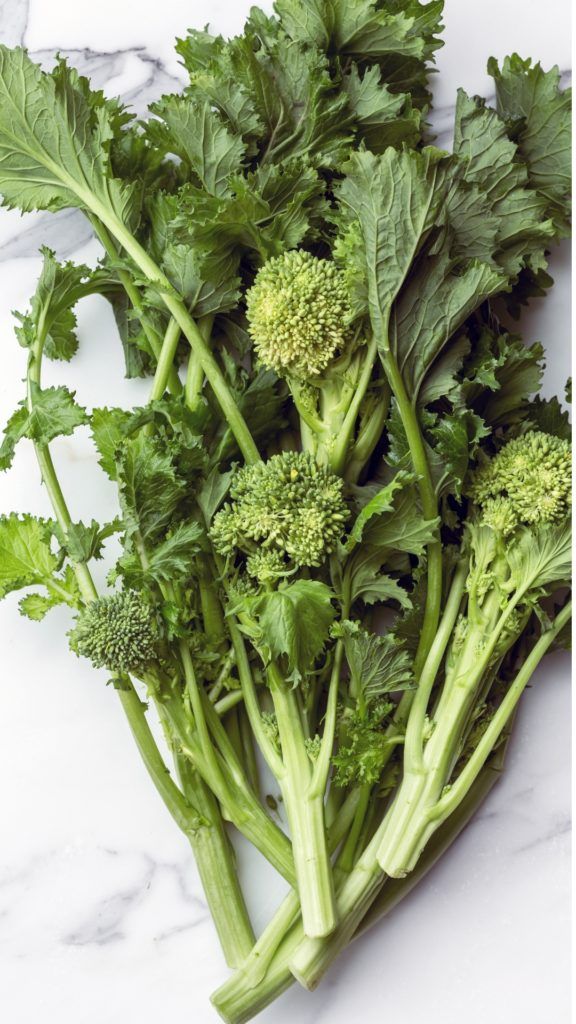
What’s the Difference Between Broccoli and Broccoli Rabe?
Broccoli is mainly comprised of its florets, and oftentimes comes with a long, thick, and tough stem. Broccoli rabe has far less florets. The buds are smaller, too. It has more leaves and skinnier, more tender stems.
You can easily eat all parts of broccoli rabe, as opposed to regular broccoli, where the stems can be really tough unless you peel them before cooking.
Another difference between broccoli and broccoli rabe is the flavor. Broccoli rabe is known to be more bitter than broccoli, much like mustard greens.
Broccoli Rabe Health Benefits
Broccoli rabe has a wealth of health benefits. It’s a powerhouse vegetable that is packed with antioxidants and prebiotics. It’s known to have cancer-fighting properties and fight a variety of chronic and lifestyle-related diseases.
Broccoli rabe is a great source of vitamin A, vitamin C, and folate. These vitamins play a role in helping your vision health and boosting your immune system. It also has a high daily serving of magnesium and potassium, which has a crucial role in your body’s energy production and blood pressure regulation.
Most notably, broccoli rabe contains compounds called glucosinolates, which lend most of its health benefits. All green cruciferous vegetables, including kale, spinach, and cabbage have these compounds.
15 Broccoli Rabe Substitutions
Collard Greens

Collard greens have large green leaves and tough stems that are typically removed before cooking and eating. However, removing the stems is optional.
Collard greens are naturally bitter, just like broccoli rabe, making for a perfect substitute. The bitterness goes down when you cook it. Pairing this with acid and fat, such as lemon and olive oil, can help you balance out the bitter flavors.
Collard greens are a great substitute for broccoli rabe when you’re making sautés, braises, and soups. I wouldn’t recommend collard greens as a substitute if you’re making stir-fries.
When it comes to pasta dishes, it depends on the dish you’re making. If you want a lot of texture and bite to your dish, don’t substitute with collard greens. If you’re making a pasta dish where you want your greens to really cook down and be tender, then collard greens are a good substitute.
Mustard Greens
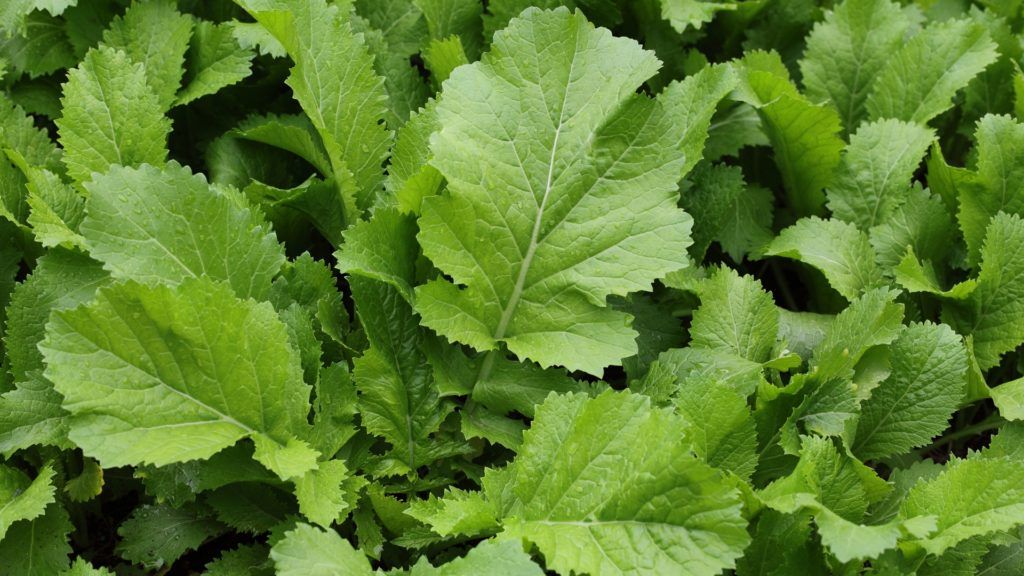
Mustard greens have medium-sized leaves with lots of slim stems. They don’t have small buds or florets like broccoli or broccoli rabe do. In look, they look closer to collard greens or Swiss chard.
Mustard greens have a similar bitter taste. They also have a spicy and peppery-tasting flavor profile. This makes it very similar in taste to broccoli rabe. However, this makes mustard greens in texture more different from broccoli rabe than other substitutes, like broccolini.
Mustard greens act as a great substitute when you’re making salads, soups, stews, sautés, and casseroles.
If you’re substituting broccoli rabe in salads (yes, you can use broccoli rabe in salads!), then I recommend mixing mustard greens with other greens such as kale, spinach, or arugula for extra flavor. Especially adding a milder-tasting green like spinach to mustard greens, you can balance out the bitter and spicy profile that mustard greens add to the salad.
You can buy mustard greens at your local grocery store in the produce section next to the rest of the leafy green vegetables. They are pretty accessible wherever you go. Store them in the produce drawer in your fridge to ensure maximum freshness, and rinse them thoroughly before cooking.
Swiss Chard
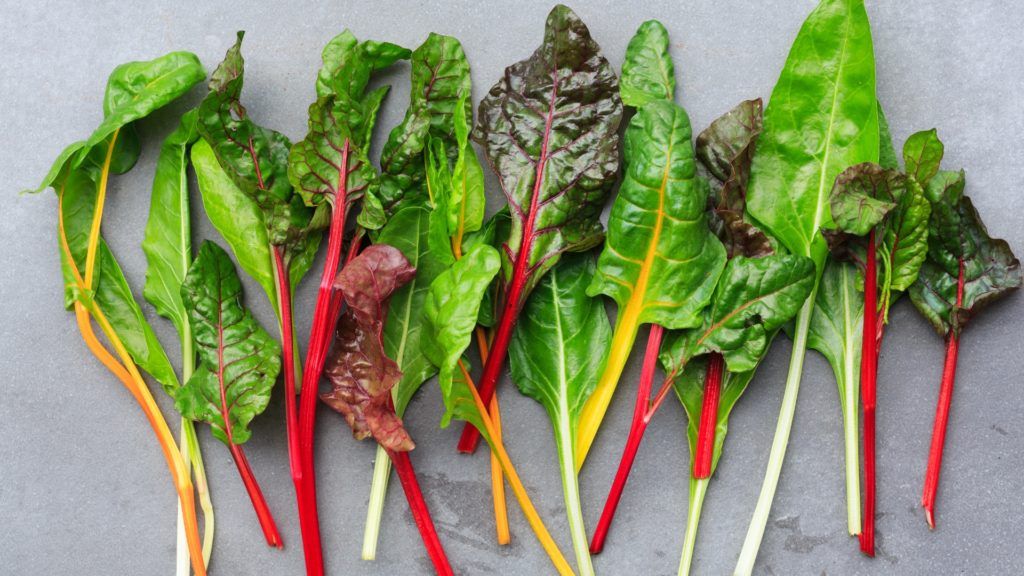
Similar to collard greens, Swiss chard has large leaves with medium-sized stems. Each leaflet is attached to a long, thick stem. What makes it different, is that Swiss chard has a variety of colorful stems, ranging from orange, pink, yellow, red, and white. The rainbow colors of Swiss chard can make any dish truly beautiful. Plus, the stems are tender enough to be cooked and eaten.
Swiss chard has a slightly bitter taste to it. However, it’s more mild in comparison to broccoli rabe. You can pair Swiss chard with an acid, like lemon juice or vinegar with olive oil to balance out the flavors.
Swiss chard can act as a great substitute for soups, stews, salads, sautés, and pasta dishes. Just like collard greens, I wouldn’t necessarily recommend it as a substitute for stir-fries.
Turnip Greens
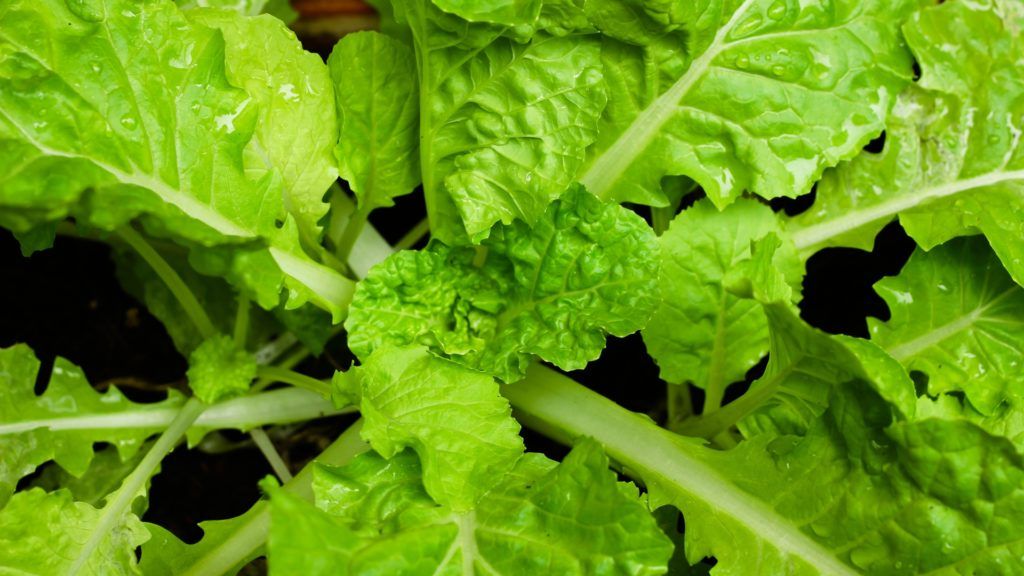
Did you know you can eat the greens on turnips? If you buy turnips with greens on them, don’t throw them away! The leaves and stems on turnips make for a great broccoli rabe substitute.
They have an earthy, peppery, strong flavor – very similar to broccoli rabe! They are amazing sautéed with bacon, hot pepper flakes, or a natural sweetener. They can be used and substituted in sautés, soups, stews, egg scrambles, omelets, casseroles, and even salads. Their bitter flavor mellows out when you cook them down.
Some grocery stores will sell turnips without the greens. Other stores will sell them with the greens still on the turnips, or even separately. If you want to buy turnips with the greens attached, you may want to look at health food grocery stores (like Whole Foods), specialty stores, or farmer’s markets.
Kale (Cavolo Nero)
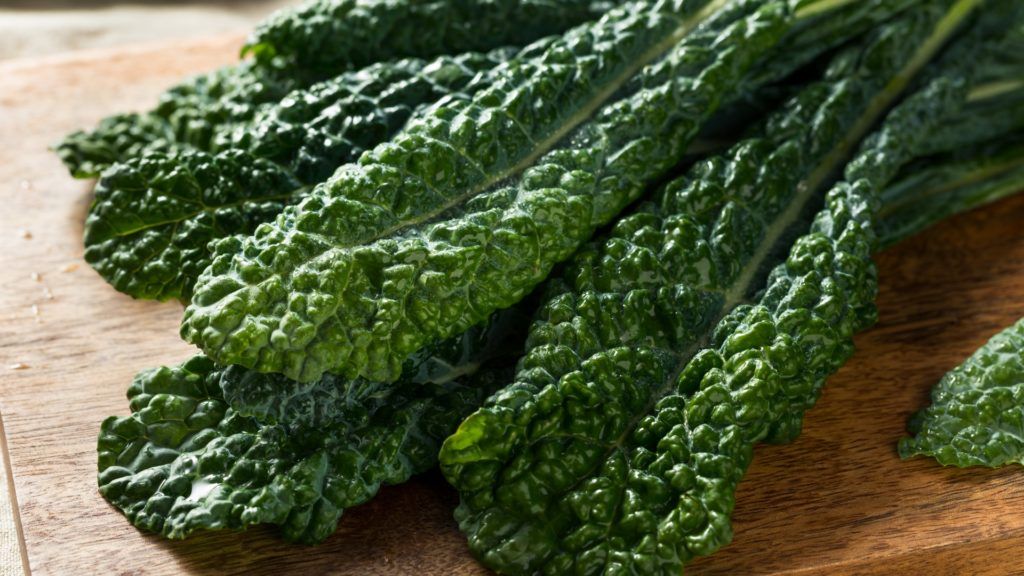
Cavolo Nero is a very dark green kale with long leaves and tough, long stems that run through the center of the leaves. It’s known as Italian kale, black kale, Tuscan kale, lacinato kale, black cabbage, and even dinosaur kale. It originates from Tuscany, Italy.
Cavolo Nero is sweeter and more tender than regular kale, but it still has an earthy and bitter taste just like broccoli rabe.
Lacinato Kale is a great substitute for broccoli rabe in sautés, salads, soups, stews, pasta dishes, and even risotto. You can boil, steam, sauté, or braise it. It tastes delicious in tomato-based soups, sautéed with garlic and olive oil, or shredded into fall-themed or summer-themed salads.
You can cook and eat the stems, or separate the leaves from the stems to incorporate into your favorite dishes.
Chinese Broccoli
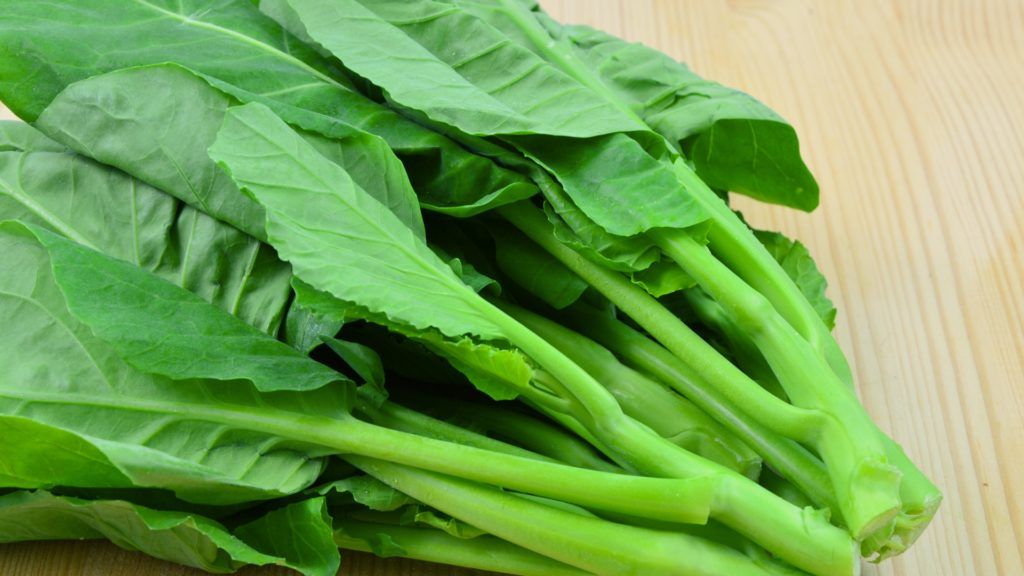
Known as a very popular side dish in Chinese restaurants, Chinese Broccoli can be used for many other purposes. Also known as Gai Lan, it has flat leaves, tiny florets, and thick stems. It has a bitter and earthy taste, just like broccoli rabe. It’s served in many Asian cuisines, such as Chinese, Thai, and Vietnamese. But that doesn’t mean you can’t use it in a variety of other cuisines.
Unlike some of the other broccoli rabe substitutions, Chinese broccoli is perfect for stir-fries! You can also braise it, steam it, boil it, and sauté it.
You can find Chinese broccoli at all Asian grocery stores, and some regular grocery stores, too.
Broccolini

Broccolini is very similar to Chinese broccoli. It’s technically a cross-breed of regular broccoli and Chinese broccoli! So, it’s actually more closely related to broccoli than broccoli rabe.
Broccolini is mainly comprised of small florets and long, tender stems, with only a few very small leaves. Broccolini is milder and sweeter than both broccoli and broccoli rabe.
It’s a fantastic substitute to use in stir-fries, pasta dishes, and some soups. It withholds a lot of its texture after the cooking process, unlike other greens such as spinach or collard greens.
Broccoli
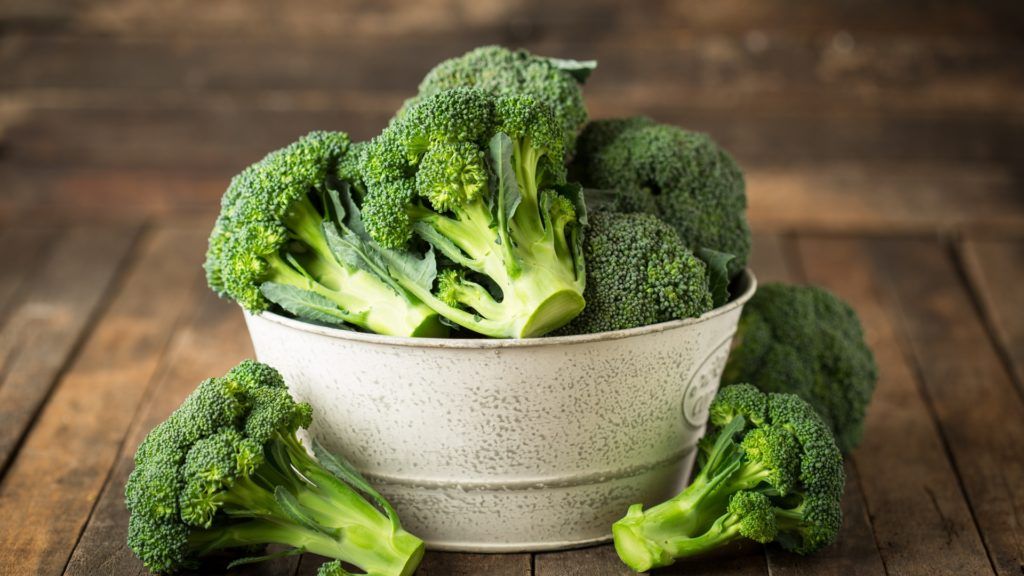
We all know and love broccoli, right? This vegetable comes from the cabbage family and is known for its thick, crisp stems, and big florets. They look like tiny, edible trees.
Broccoli has a grassy, earthy flavor that’s slightly bitter. However, it’s not as bitter as broccoli rabe. Because of broccoli’s flavor profile, it makes it a good broccoli rabe substitute for dishes that require less cooking time, like salads or even stir-fries.
Overall, you can substitute broccoli rabe for broccoli in stir-fries, soups, pasta dishes, salads, and casseroles.
Dandelion Greens

Dandelion greens are the red and green leaves that grow from yellow dandelion plants. Their leaves have jagged edges that surround the perimeter of the leaves. Younger dandelion greens are softer and more tender. They tend to be more mild in flavor. Older Dandelion greens are tougher and have a more robust flavor.
Similarly to many of the broccoli rabe substitutes listed in this guide, you can sauté them, blanch them, or substitute them in pasta dishes, omelets, and soups. They’re also fantastic in salads!
Finding Dandelion greens in grocery stores isn’t always the easiest, which makes this a sub-par broccoli rabe substitute. You will have better luck finding these greens at specialty grocery stores, like Whole Foods, farmer’s markets, or talking to your local farmer.
Escarole
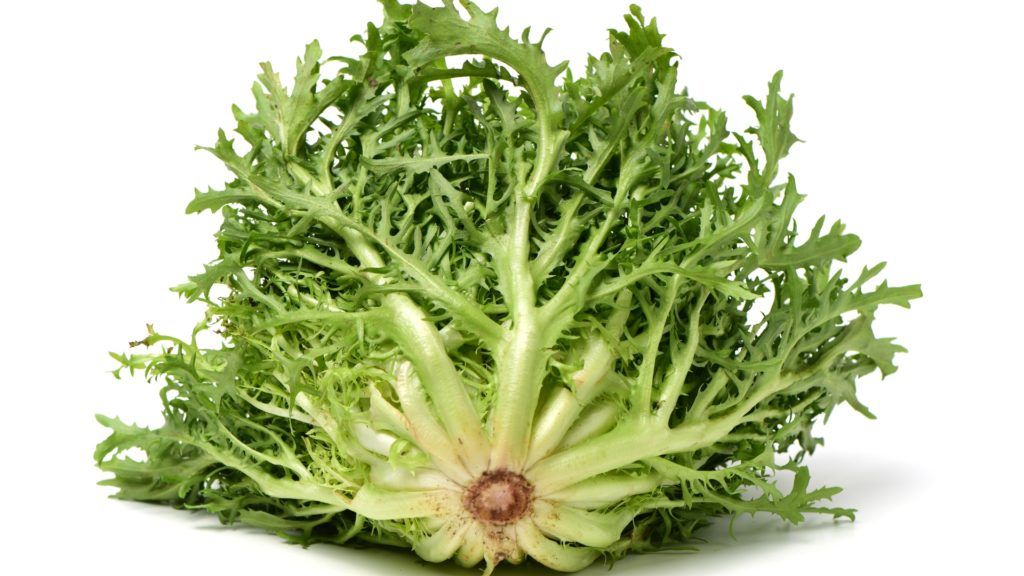
Escarole is a leafy green vegetable that has broad, curly leaves. It has a naturally bitter taste and crunchy texture. Escarole is a part of the Chicory family and is closely related to Endives. However, escarole has tougher leaves.
Escarole is a perfect broccoli rabe substitute for salads and cold pasta dishes. You can pair it with citrus, cheese, and nuts. I wouldn’t recommend this green as a substitute for stir-fries or roasts, as the texture won’t hold up for these types of dishes.
You can easily find it in stores along with the other leafy green vegetables.
Spinach

Known as one of the superfoods of the world, spinach is a dark green, leafy plant that is much milder in flavor than broccoli rabe or its other substitutes, and much more tender.
It’s a great broccoli rabe substitute for sautés, soups, stews, salads, and a variety of pasta dishes. If you choose to use spinach, then I would suggest mixing it with another, more bitter broccoli rabe substitute, especially if eaten raw.
You can also use spinach in a dish that has bitterness coming from other foods. Broccoli rabe can be tougher and more bitter, so if you’re using a substitute, it’s important for that substitute to closely resemble the taste and texture of broccoli rabe.
You can buy spinach in butches or lose in plastic containers at the grocery store. They are usually stored with the other greens, whether boxed or loose leaf.
Arugula
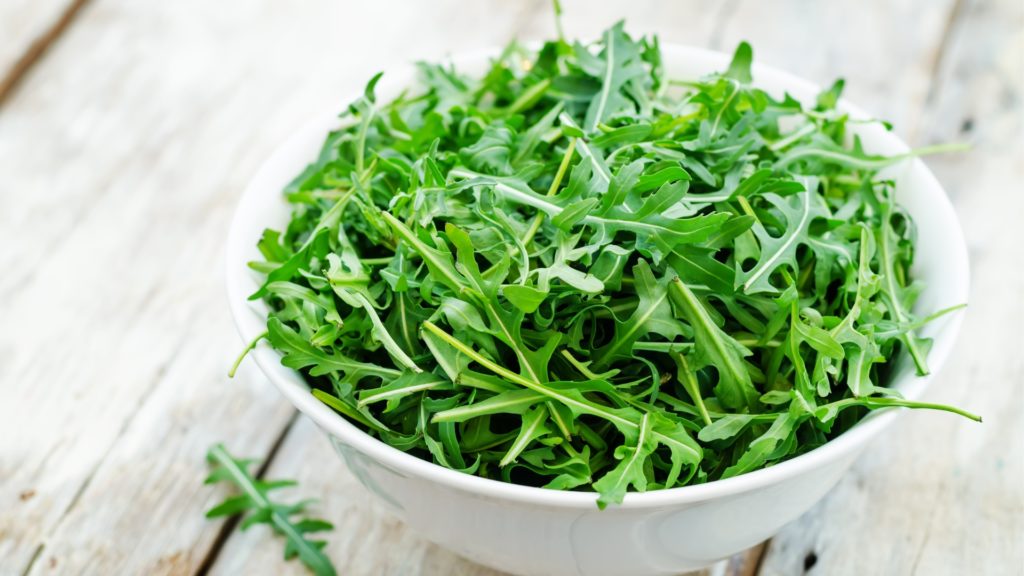
Also known as rocket, roquette, and rucola, arugula is a tender, green leafy vegetable. It possesses the same peppery, spicy, nutty, and bitter flavor as broccoli rabe. However, it’s much more tender. It’s a native plant of the Mediterranean, making it a common ingredient for many Greek and Italian dishes.
Ironically, arugula is not actually a lettuce. It’s in the same family as cabbage, mustard greens, and broccoli, making it a suitable substitute for broccoli rabe.
Arugula is a great substitute if used in salads, soups, stews, casseroles, egg scrambles and omelets, pasta dishes, and sautés.
Watercress
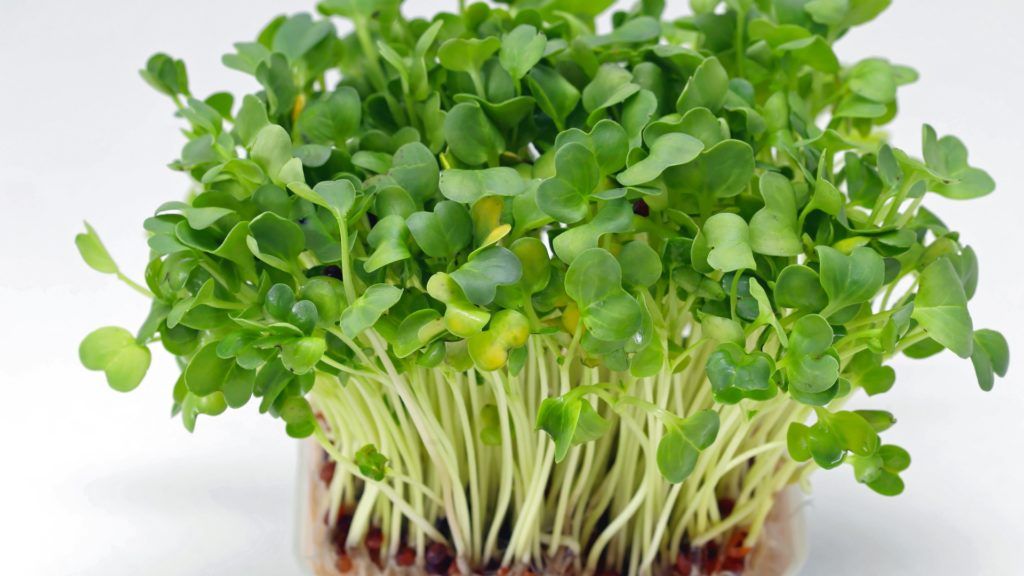
Watercress is a leafy vegetable that actually grows in streams. It has small, rounded green leaves with very thin, white stems.
Young watercress can be really tender and taste really refreshing. Older watercress can be tougher and more bitter, which may be better if you’re using it as a broccoli rabe substitute.
Watercress is a great substitute to use in salads. I suggest mixing watercress with other types of greens, such as escarole and arugula for an extra bite.
Bok Choy

Bok choy has medium green leafy leaves attached to a thick white stem. It looks like a cross between a celery stalk and a head of romaine lettuce. It’s very popular in Chinese cuisine.
Bok choy is a great substitute to use in sautés, stir-fries, salads, soups, and stews. It has a mild, grassy flavor with a slight peppery taste.
You can buy Bok choy at your local Asian grocery store, or certain western supermarkets.
Chicory Greens

If you don’t have escarole, then you can pick from a variety of chicory greens to substitute instead. Chicory greens are bitter and hearty greens that are usually planted in fall and harvested in spring.
Curly endives (Frisee), Belgium endives, escarole, and radicchio are all chicory greens.
Chicory greens are a good broccoli rabe substitute for cold dishes such as pasta salads, regular salads, and cold soups. They are great for a refreshing, light meal. I suggest pairing them with other broccoli rabe substitutions, such as arugula and spinach.
Best Broccoli Rabe Substitute for Pasta Dishes
The best substitute for pasta dishes is broccolini. Broccolini will preserve the taste and texture of broccoli rabe. It’s known to be mild and sweet but still holds a little bit of the bitterness that comes from broccoli rabe.
Italian kale is a runner-up. It’s a bit more tender, especially when it’s cooked down, but it still provides a level of toughness and bitterness that closely resembles broccoli rabe.
Whether you’re making a warm pasta dish or a cold pasta salad, both of these substitutes will work. If you’re using broccolini in pasta salad, I recommend steaming them first, so they are fork-tender. If you’re using Italian kale in a cold pasta dish, chop it up finer than if you were cooking it in a warm pasta dish, since there will be no heat to break it down. The smaller pieces will make it more tender and easier to eat raw.
Best Substitute for Salads
Chicory greens would be the best substitute for broccoli rabe. Out of all of the varieties of chicory, escarole is a particularly good substitute. That’s because it’s tender enough to be enjoyed raw in a salad, while still providing the bitter taste and tougher texture of broccoli rabe.
Spinach and arugula are honorable mentions for broccoli rabe substitutions. These greens don’t provide the same level of texture or toughness as broccoli rabe, but they still provide a similar taste. Especially the arugula, with its peppery, nutty, and spicy flavors.
Plus, these greens are very easy to eat raw in salads.
Best Broccoli Rabe Substitute for Soups
Swiss Chard is the best for soups. The leaves will cook and break down just enough in soup to ensure tenderness, while the stems remain intact enough to provide a similar texture as broccoli rabe.
I recommend cutting the Swiss chard into ½ inch pieces, and stirring into your favorite soups for 1-2 minutes before you take it off the heat. You can also put the Swiss chard in the soup the second you take the pot off the heat, if you want more of a crisp bite from the Swiss chard.
Best Broccoli Rabe Substitute for Stews
Italian Kale is perfect for stews. Stews are already heartier than soup, which makes Italian kale a good choice. Cavolo Nero will hold up well to being cooked longer than soup, while still ensuring some texture remains intact.
I recommend chopping up the kale in ½ inch pieces and stirring it in the stew in the last 5-10 minutes of cooking.
Best Broccoli Rabe Substitute for Sautés
Italian kale is another great substitute for sautés. Applying a high heat for 10 minutes allows you to break down the leaves just enough until they are tender, while still ensuring there’s a bite to them.
You can include some of the stems to provide extra texture if you’re using Italian kale as a broccoli rabe substitute in sautés.
I recommend chopping the kale into ½ inch pieces and sautéing with extra virgin olive, lemon, lemon zest, and some grated parmesan.
Other good broccoli rabe substitutions include Bok choy and spinach. Bok choy has thick white stems that will ensure you keep the desired texture in your sautés, while the leaves will break down enough to ensure tenderness.
Spinach is much more tender and will drastically shrink down when you sauté it. However, it can act as a great side dish alternative when you don’t have broccoli rabe on hand.
Best Broccoli Rabe Substitute for Stir Fries
Chinese Broccoli is by far the best substitute for broccoli rabe in stir-fries. You can stir fry it whole or chop it up into ½ inch pieces.
Traditionally used in Chinese cuisine, Chinese broccoli is a natural alternative that will not only compliment the flavors of your stir fry, but the texture as well. Chinese broccoli has a very similar composition, with thicker stems, florets, and leaves. You couldn’t have a better alternative.
Honorable mentions for stir fry substitutes include broccoli, broccolini, and Bok choy.
All of these vegetables hold up really well in the very high heat that stir-fries are typically cooked in.
Best Broccoli Rabe Substitute Overall
Chinese broccoli is the best overall substitute for broccoli rabe. Chinese broccoli has large leaves, small florets, and long stems, similar to broccoli rabe. It has a similar texture and taste to broccoli rabe.
Chinese broccoli is slightly less bitter than broccoli rabe, but more bitter than regular broccoli, making it a good overall substitute.
Chinese broccoli is perfect for anything you want to put it in. That’s another reason Chinese broccoli is the best overall substitute. Some of the substitutes listed won’t work for certain dishes. For example, putting collard greens in a stir fry wouldn’t be a good idea.
However, Chinese broccoli is great. Even for dishes like salads, you can steam or sauté Chinese broccoli before putting it in a salad. It will still taste great, and be a good substitute for broccoli rabe.
Honorable mentions to the overall best broccoli rabe substitutions include broccolini and Italian kale (Cavolo Nero).
Frequently-Asked Questions
Yes! The whole plant is edible. For the broccoli rabe leaves, you can quickly steam them and put them in salads or casseroles. You can also sauté them with a little bit of oil, garlic, and lemon juice for a refreshing side dish.
Broccoli rabe is originally from Italy. It’s popular in many Italian and Mediterranean dishes. It first appeared in the United States in the early 1900s and has grown in popularity ever since. You can find it more easily in grocery stores now than you used to.
Kale is similar to broccoli rabe. Broccoli rabe comes from the same family as kale. However, it’s more bitter in taste. Plus, broccoli rabe has small broccoli florets, leaves, and long stems in comparison to kale’s curly, dark, and tough leaves.
Absolutely! Chinese broccoli is overall the best broccoli rabe substitute you can use. Substitute it in stir-fries, sautés, soups, stews, pesto, and more.
Yes! However, it’s not quite the same, as broccolini is known to be sweeter, less bitter, and more tender than broccoli rabe. However, it still has the same small broccoli florets, leaves, and long stems as broccoli rabe.
Broccoli rabe can be considered a superfood. It’s a dark, leafy green that is packed with antioxidants and rich in fiber. Broccoli rabe is packed with vitamins and minerals, including vitamin C, A, and folate.
Yes! Steam it whole or roughly chopped. Steam for 3-5 minutes.
Studies have shown that broccoli rabe has glucosinolates, which act as cancer-fighting properties in the body. When glucosinolates degrade, they form sulforaphane, which also helps in fighting cancer.
Yes! You can minimize its bitter flavor by sautéing it with extra virgin olive oil, garlic, parmesan cheese, and lemon juice. By adding fat and acid to it, you can cut the bitter taste.
Broccoli Rabe Nutrition
Broccoli rabe is extremely nutritious. In just one cup, it only has 42 calories and a ton of vitamins and minerals.
- Calories: 42
- Carbohydrates: 5 grams
- Fiber: 4.8 grams
- Protein: 7 grams
- Fat: 1 gram
- Vitamin A: 43% of the daily value (DV)
- Vitamin C: 70% of the DV
- Folate: 30% of the DV
- Calcium: 15% of the DV
- Iron: 12% of the DV
- Zinc: 8% of the DV
Broccoli Rabe Recipes
- Broccoli Rabe and Sausage Pasta
- Sautéed Broccoli Rabe
- Broccoli Rabe, Chickpea, and Ricotta Salad
- Broccoli Rabe Risotto with Grilled Lemon
- Sausage, Beans, and Broccoli Rabe Soup
More Guides on Kitchen Basics
- 7 Non-Dairy Substitutes for Buttermilk
- How to Roast Garlic in the Oven
- Air Fryer Italian Sausage
- How to Roast Sweet Potatoes in the Oven
- Substitute for Barley
Bottomline
Broccoli rabe is a versatile superfood growing in popularity. Traditionally used in Italian and Mediterranean cuisine, it’s more commonly being brought into American cooking and can be used in a variety of non-Italian dishes, such as Latino and Asian cooking.
There are many broccoli rabe substitutions. It’s one thing to know all of the substitutes you can use for broccoli rabe. It’s another thing to know what substitute is best for which type of dish you’re making.
For dishes that don’t require a lot of cooking or are eaten raw, it’ll be better to substitute tender broccoli rabe substitutes, like arugula and spinach. For dishes that require more cooking, Chinese broccoli and broccolini may be better broccoli rabe substitutions.
Don’t forget to consider the taste and texture of broccoli rabe, how it compares to the substitute you’re using, and how that will affect the dish you’re making!
If you found this article on broccoli rabe substitutions helpful, I encourage you to check out my other Kitchen Basics articles and subscribe to my newsletter for more helpful cooking tips!

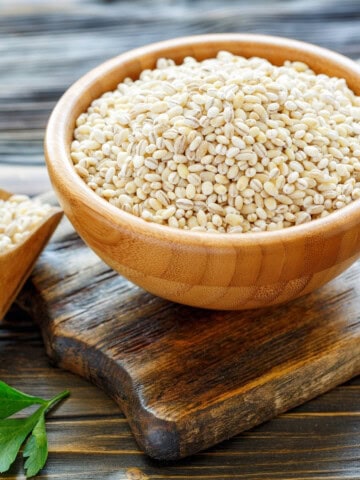

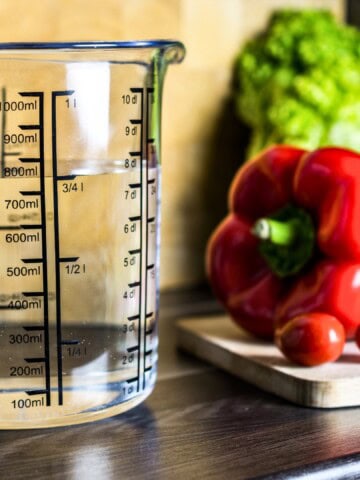

Comments
No Comments